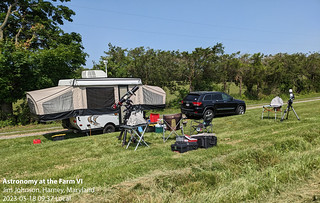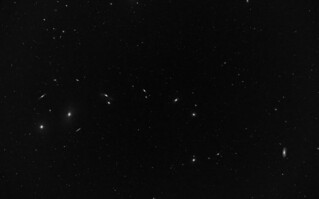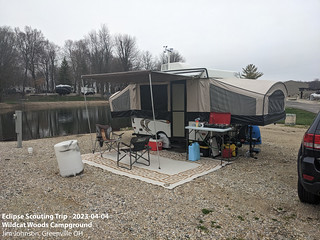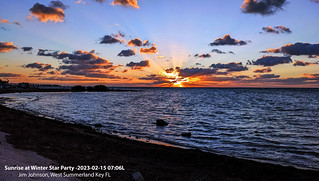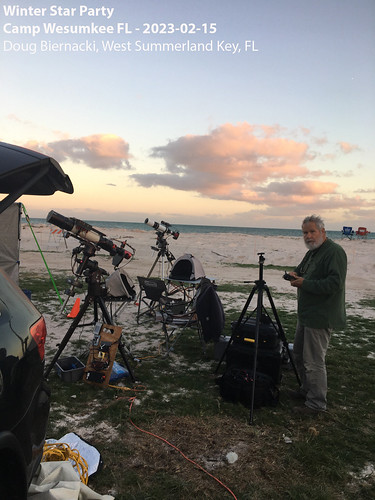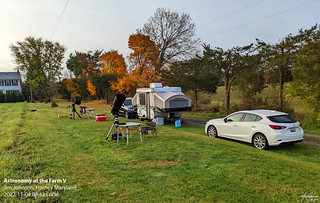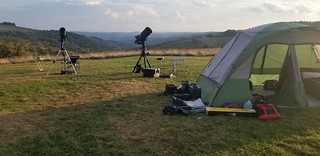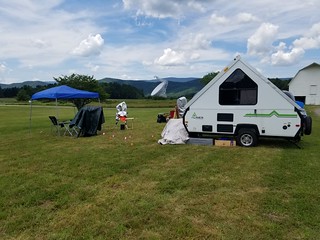Eclipse Observing Trip with Doug Biernacki from 2024-04-07 to 23-04-09.
This trip was a long time in the making. I was comitted to viewing the 2024 eclipse immediately after viewing the 2017-08-21 total eclipse. Most of the nearly seven years between the two eclipses consisted of waiting for the next one. Just before arriving at the one year mark before this eclipse, I got Doug on board for an eclipse trip and began planning in earnest.
For this eclipse trip, I had a two-pronged, weather-dependent plan. Depending upon which weather forecast looked most promising, we would travel to either western Ohio (preferred) or northeast Texas. After arriving at one of those two destinations, we would further assess the weather the evening before and either veiw the eclipse from that location, or move along the path of totality to get to clearer skies, if needed, on eclipse day.
Exactly a year before the eclipse, we mounted a scouting expedition in the western Ohio/eastern Indiana region to decide on a campground from which we hoped to view the eclipse. Wildcat Woods Campground in Ohio was our base for this expedition. We looked at a couple of other campgrounds, but ended up selecting Wildcat Woods Campground for the 2024 eclipse trip, and we made a reservation before leaving after the 2023 visit. This was the first that the campground owners knew of the eclipse.
In the last few days before we were to depart Maryland, the weather forecasts were all over the place, but the Ohio prong looked best on the day prior to departure. We towed the camper from Maryland to Wildcat Woods on April 6th.
On Sunday, the day before the eclipse, we spent the day carefully monitoring the forecasts (“perseverating” would be more accurate) expecting the various models to coverge and provide a clear prediction. They didn’t converge, so the weather picuture was not very helpful. The forecast model that we decided to accept as accurate showed clouds all morning on eclipse day, and clearing out at noon with about 9% cloud cover. The regions to the west and to the east along the eclipse path did not look materially different. With no compelling reason to move to another location on eclipse day, we decided that night that we would be staying at Wildcat Woods for the eclipse.
We woke up to an unexpected crystal clear and deep blue sky on eclipse day morning. The forecast for eclipse time still looked pretty good.
At around 9am high thin clouds rolled in, and persisted through the eclipse. Even with the high thin clouds in place the clouds did not hinder eclipse viewing at all.
It would be pointless to attempt a description of the eclipse experience here, or anywhere else, because there are no adequate words available to me for this purpose.
We departed for Maryland the next morning, and by mid-afternoon we experienced about 45 minutes of traffic slow downs that were probably due to southbound eclipse traffic. These slowdowns hindered our travel from central Pennsylvania and down toward Baltimore and Washington DC.







